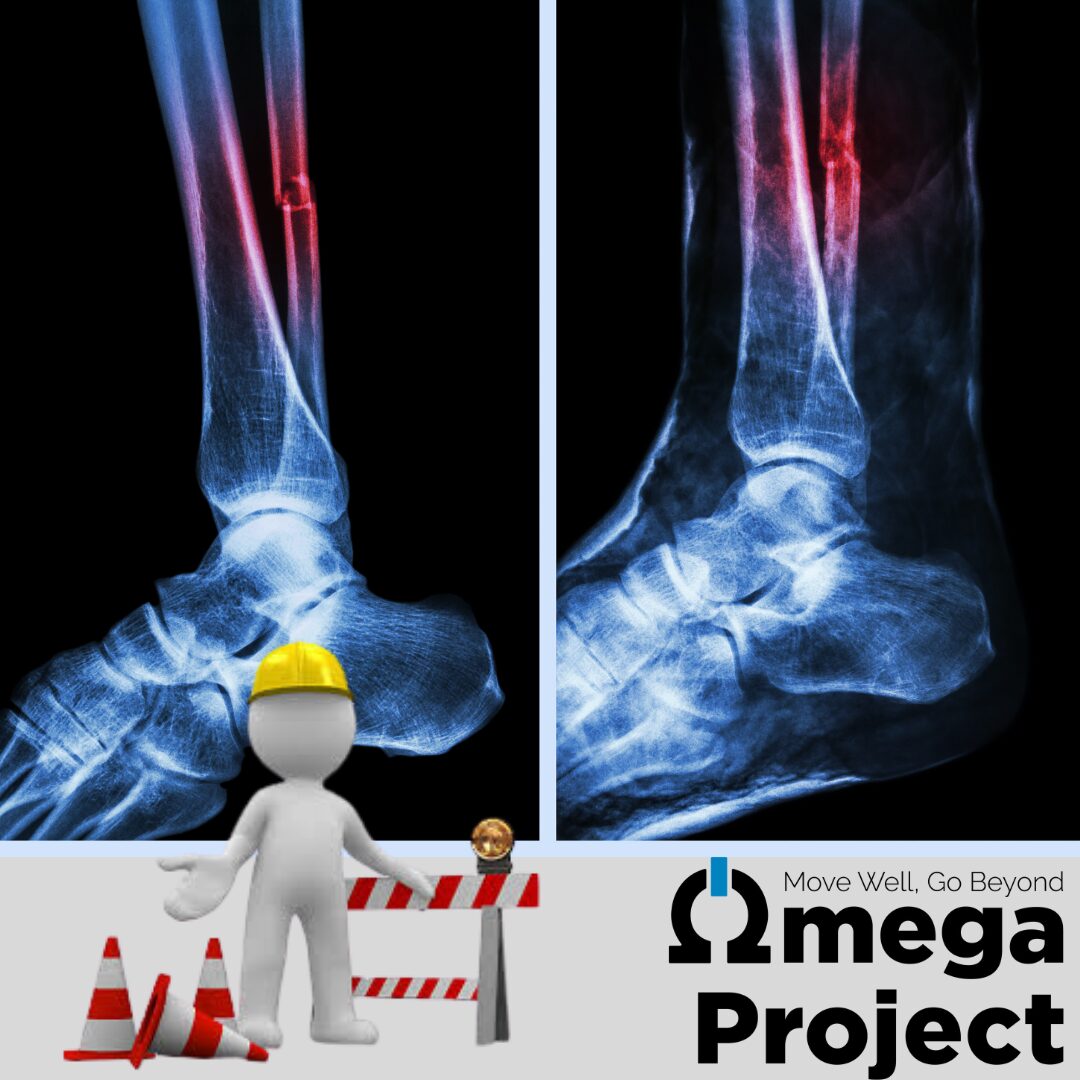Last week we discussed the intricacies of tendon healing and this week we will discuss more about bone healing. If you’ve ever dealt with (or are currently dealing with) a stress fracture, you’ll want to read this!
Often with a bone injury (fracture/stress fracture), there is a period of immobilization or rest that must occur. This timeline of immobilizaton/rest often depends upon the severity and type of fracture, whether a surgery or other intervention was needed and whether proper healing is occurring early on. Typically bony healing takes about 6 weeks.
Bone healing often is divided into 4 main phases of healing:
1. Hematoma formation: this is the early inflammatory period where the body is sending out the construction crew to clean up the damage (very similar to acute phase of tendon healing). This is often accompanied by initial redness, swelling and pain. During this period, a hematoma or blood clot is formed which is the first layer that bridges the 2 separate areas of bone together.
2. Soft callus formation: this phase begins about 1 week after injury and the soft callus replaces the blood clot that has formed and begins to create a stronger bridge between 2 bony segments but is not yet strong enough to use the body part. During this period the body part is still casted or immobilized to protect the healing.
3. Hard callus formation: Over the next 2-6 weeks (or longer), the final phase of the bridge is built, this is known as the hard callus and creates a much stronger and more stable bone. Once the hard callus is formed bone union is achieved. This formation may actually take a bit longer in the lower extremity than in the upper extremity. The lower extremity often needs some controlled weight bearing to allow gentle loading which facilitates hard callus formation. This is why physicians will at times allow controlled weight bearing in a boot.
4. Bone Remodeling: this stage typically begins about 6 weeks post-injury and can occur for months or years. It is during this time that you can begin a progressive increase in activity and loading, which helps to create stronger and more organized bone tissue. It is during this period that the bone actually becomes stronger, which is what allows us to return to higher level activity.
The early phases of bone healing are often accompanied by some bone demineralization and during this time the bone still remains very weak. During the later phases of healing, as you are able to load the bone more through walking and other strengthening/weight bearing activity, the bone begins to become stronger.
This is why we cannot just go from a cast or boot being removed right back to normal activity.
This is when we need to consider the rehab progression. Below is an example of the progression for a fibular fracture.
Mobility: improve the mobility and flexibility of the joint above/below the area of the fracture as able and the soft tissue surrounding the fracture site. This can sometimes be done during the period of immobilization.
Functional movement: Restoring normal walking mechanics (once boot/cast has been removed)
Strength: Non- weight Bearing strengthening (with thera-bands) progressing to body weight activity (e.g squat)
Load management: Progress resistance with weight bearing activity (squat/lunge) and then progress to running and jumping activity.
Carefully following this rehab progression with close consideration of healing timeline and physician restrictions based upon appropriate and anticipated healing is the key to successful return to activity and function.
Other things that can help with bone healing:
Laser Therapy
Proper Nutrition
Stress Management
Sleep Health

